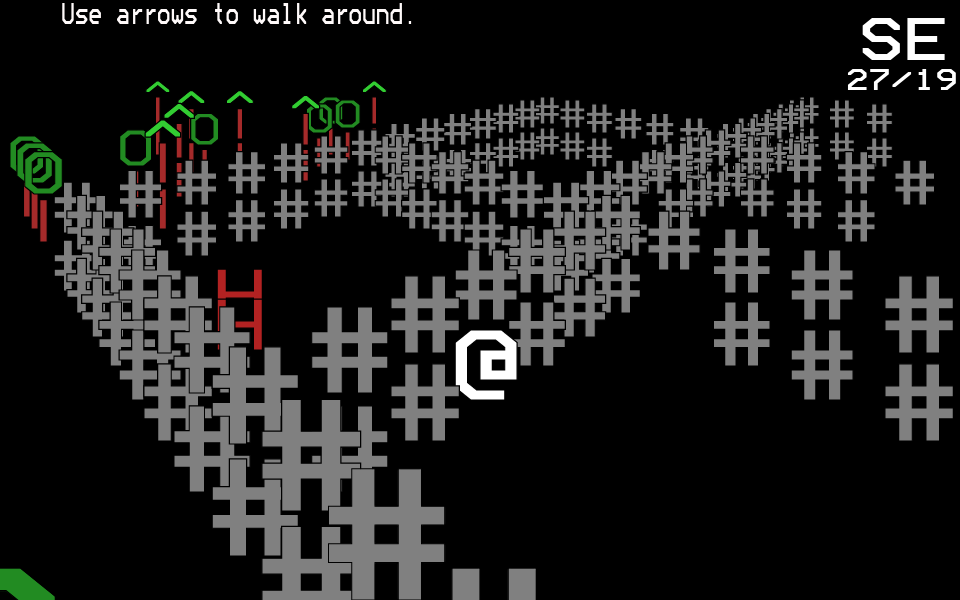You know, there's a reason why I'm not afraid to set projects aside: they give me something to pick up later, which is a lot easier than starting from scratch all the time. This time it's a new roguelike made with the EightWay Engine, in which I'm trying out new ways to use ASCII art. In 2.5D, no less.

I can only show you a screenshot for now because I stopped to write a level generation how-to. Like the game, it was intended for the PROCJAM last November, and things didn't work out. So I'm making both of them in a new year and decade instead.
Well, the game might take a little longer, as I explore new territory in graphics, level design and gameplay at the same time. Famous last words, you might say, but it's very much in line with the original goals for No Time To Play, that I allowed myself to forget for a while, then struggled to remember.
Anyway, as for news, this week we have a book on the Doom modding community and some thoughts on AI Dungeon 2. Details below the cut.
It's the middle of the week, and K.D. points me at a two-year-old thing I somehow missed, likely due to other worries at the time: an online book about the history of Doom mods. That would be the original 1993 Doom, by the way.
I'm halfway through the text as of this writing. It starts by looking at two modding extremes, people who make extra-hard WAD files for players who seek a challenge, and those that see a more cerebral game hiding into the seminal shooter. It's not the first time someone draws parallels between first-person games in very different genres, either. Then we get to the part where modern ports emerged with the open-sourcing of the original code, and how far people were able to take the venerable engine with just a few more additions. I'll let you discover the rest. It's fascinating, and very well written.
One thing that bothers me is the idea, implied throughout when not outright stated, of gameplay being somehow at odds with worldbuilding. Uh... what?! The very first episode of the very first game proved how the two can work together great, even pioneering one of the techniques mentioned repeatedly in the book: snipers perched on a high vantage point that the player can reach later, thus achieving several goals at once. And that was near the beginning of the first level. Seriously? Also, what is it with people and this obsession with polish?
But then, a similar false dichotomy is still considered inherent in interactive fiction, where an insistence on polish at the expense of everything else almost killed the genre at one point. Funny how that goes.
(On a related note, see these beautiful thoughts about the 2016 Doom reboot, from the studio director at the time.)
On Friday, Hugo Labrande has words about AI Dungeon 2 (article in French). It's an excellent overview, that draws some parallels with improvisational theatre, and contrasts with conventional interactive fiction. It's also a disappointing one. Why am I not surprised to hear the titular AI is after all just a fancy chatterbot, the likes of which we already had when Stanley Kubrick's 2001 hit the theaters? Funny how even running it on Google's servers doesn't seem to bring it one step closer to HAL 9000.
It might be related to how we still equate intelligence with the ability to play Chess. Or Go. Or Starcraft. Not so much the ability to find meaning in these activities and apply it to a world we're still struggling to understand. While human beings seem able to do that with the most abstract roguelike.
"Computer, let's play a game." "List the resonances of the sub-quantum states associated with transitional relativity..."